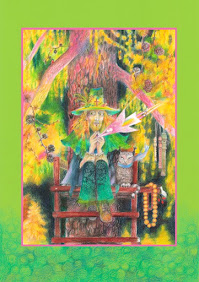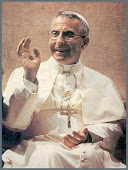AS a complement or contrast to my previous post, 50 Reasons to Boycott the Catholic Church, here is a very inspiring story taken from the book. Sense of the Faithful, How American Catholics Live Their Faith, by Jerome Baggett (2008). I find it most interesting that this anecdote constitutes the opening of the book itself.
Ending and
Beginning
“The thing about American Catholicism is
that it both exists and doesn’t exist!” Bill
McNamara blurts out these words but then
seems surprised by them, as if he had
happened unexpectedly upon someone from
his past. He tarries a bit, refl ecting.
“What do I mean by that?” he asks, now
seemingly reacquainted and rightly confi -
dent that he has anticipated my next
question. “I mean it exists in the sense that it’s
an it, something you and I can talk
about, and we can identify elements of it and so
forth. But it doesn’t exist as some
monolithic, unchanging thing. It’s not as if any
one person understands it and lives it out
the same way all the time or in quite the
same way as anyone else.”
Even though Bill was among the very first
people I interviewed for this book,
I permitted myself an early conclusion: He
knows what he is talking about. After
many cups of tea and through constant
interruptions by Rusty, his seal-point
Siamese— whose name, like those of all of
the respondents in this book, is a
pseudonym—Bill’s account of his life and
faith demolished the idea that American
Catholicism could be “some monolithic,
unchanging thing.”
Born into a working-class family in the
early 1930s, Bill grew up in an almost
entirely Irish section of Philadelphia.
His upbringing was typical of the “urban villagers”
about whom sociologist Herbert Gans once
wrote so compellingly.1 The
ethnically defi ned neighborhood, the
modest economic means, the large family that
included Bill and fi ve younger siblings,
the clearly prescribed gender roles to which
his contractor father and stay-at-home
mother purportedly strictly conformed, the
traditional—and, in this case,
traditionally Catholic—mores: Bill can recall it all in
vivid, if not wistful, detail. The
particulars of his religious upbringing are especially
memorable to him. He attended nearby
parochial schools until he was swayed by an
unexpectedly generous fi nancial aid
package to enroll in a large public university,
where he majored in accounting. He went to
church each week without fail, and,
unless serving as an altar boy for an
unpopular (read: inordinately early) Mass, he
was typically accompanied by his entire
immediate family. This instilled in him
an enduring love for the beauty of the
Mass and especially its music, which he
still compares favorably to the “cacophonous
crap” one hears at other, mercifully
unnamed parishes. One of the younger
parish priests served as a “friend and kind
of mentor” for Bill who could talk to him
about nearly anything, including at one
point his own—admittedly short-lived—thoughts
of entering the seminary. And,
of course, there are the stories that seem
to be standard fare among Catholics of
Bill’s generation. From the accounts of
his mentor’s many kindnesses to the somewhat
overwrought “ruler-wielding nun” tales,
from now-humorous accounts of
fi rst confession trepidation (“Hell, it
was scary in that little booth!”) to feelings of
intense piety while accompanying Jesus
along the Stations of the Cross each Friday
afternoon during Lent, Bill’s world was
Catholic through and through.
However, once he entered his twenties,
that world came to an end. “I never
had any animosity like a lot of gay
Catholics who had bad experiences in school or
things like that,” he confi des. “I wasn’t
against it, but I didn’t feel that comfortable
with it anymore.” Always attracted to men,
Bill fi rst became sexually active at the
age of twenty-six. Then, rather than
concealing from others what he considers his
“honest, true self,” he moved to San
Francisco, where he got a well-paying job with
an insurance company and eventually began
his new life as an openly gay man.
He closed the door on his Catholicism
slowly at fi rst, then fi nally slammed it shut.
This age-old tradition seemed incongruous
with his new city and job, new friends,
and, after ten years or so, a relationship
and then a newfound level of intimacy with
Daniel, his partner for eighteen years.
Daniel attended weekly Mass at Most Holy
Redeemer church in the city’s burgeoning
gay enclave, the Castro District. But he
went a bit less often when he and Bill
bought a house together across the bay in the
Oakland Hills. Bill, on the other hand,
preferred to sleep late most Sundays.
Everything changed when Daniel contracted
AIDS, and Bill became his primary
care provider. This tragedy brought Bill
agonizing stress and heartache, but
it also introduced him to a face of
Catholicism that he had not previously known.
The AIDS Support Group at Most Holy
Redeemer sent volunteers to help tend to
Daniel’s health and personal needs, which,
toward the end of his life, required daily
visits. Even in his grief, Bill was
impressed by these people’s witness to their—and
once his—faith. This was not the
intolerably dogmatic “Churchianity” that had
come to seem ossifi ed and irrelevant to
him. Nor, of course, was this the vicious
“God hates fags” message he had heard
while doing some church shopping before
moving from Philadelphia. He found this
open-hearted and open-minded incarnation
of the faith to be very alluring. So much
so, in fact, that Bill began attending
Mass at Most Holy Redeemer not long after
Daniel’s death and soon became an
active member of first the AIDS Support
Group and then the parish itself.
Bill’s story might appear to fit the
familiar “lapsed Catholic returns to Mother
Church” mold, but Bill has not returned to
anything; he has begun something new.
On the one hand, he is quite the unabashed
Catholic: “I love the traditions, and I love
the mystery; I think it’s a very, very,
very rich religion.” On the other hand, though, he
is adamant about his freedom, even
obligation, to mine those riches on his own terms
and in accordance with his own needs. He
has chosen to be a member of Most Holy
Redeemer across the San Francisco Bay
rather than of his own neighborhood parish,
which he considers less “open and affi
rming” to gay Catholics. He respects priests
enormously (although he is less generous
in his assessment of bishops), but he is also
a strong advocate for the laity’s role in
both pastoral ministry and parish governance.
He is a “greeter” at the main (10 am) Mass
on Sundays and has sponsored several Rite
of Christian Initiation for Adults (RCIA)
candidates. At the same time, he bristles at
the thought of being presumptuous enough
to even talk to others about faith in a
way that might be perceived as
inappropriately pushy. He calls himself a “very strong
Catholic” but, without hint of apology,
eagerly embraces the pejoratively intended
moniker “cafeteria Catholic” as a
testament to his own religious agency and capacity
for discernment. In short, Bill has begun
something new as a Catholic in response to
developments in his personal life and because
he has lived through a period in which
the American church itself has witnessed
important social and cultural changes. As
a result, it has also begun something
quite innovative.
***
Much as I would like to end this posting on such a glowing note, I can't help but link to a recent article just posted at Iglesia Discalza's Blog about the recent silencing of Colombian Jesuit, Fr. Alfonso Llano Escobar, S.J., for having the temerity to criticize Pope Benedict's most recent book, Jesus of Nazareth: The Infancy Narratives. Benedict has once again silenced a prominent theologian, bringing to an end his thirty year career as a journalist. This is yet again another imperative sign of why lay Catholics must reclaim their church and become the public voice of theological debate. Read the whole article here.











